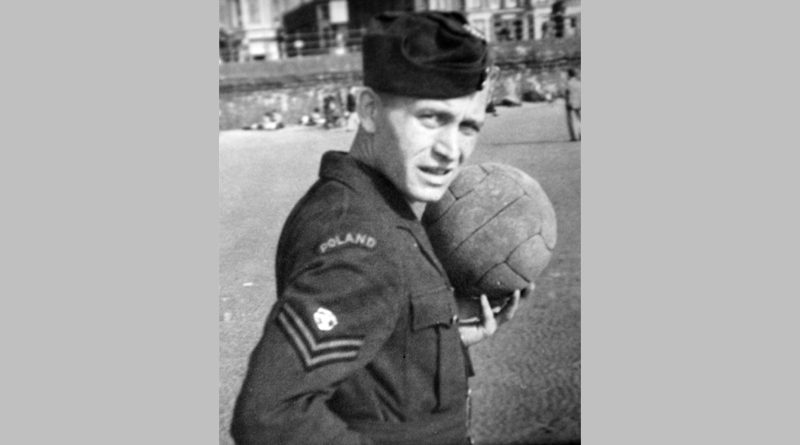The Pole in the Brighton goal during World War II
Like most players who turned out for Brighton & Hove Albion in World War II, Polish goalkeeper Bishek Szajna-Stankowski had quite the story.
Escaping the Nazi invasion of his homeland, joining the RAF and teaching a young lad in Blackpool by the name of Jimmy Armfield how to play football were just some of the feats that Szajna-Stankowski packed into an extraordinary life – which featured two appearances at the Goldstone Ground.
The first of those came as part of an RAF Representative team. Matches between the different branches of the Armed Forces were common during the war with several being held at the Goldstone, although nobody was allowed to know that Szajna-Stankowski was the man keeping goal for the RAF.
He was named was listed on the team sheet simply as ‘A.Pole’. There were fears of reprisals against his family and friends back in Poland if the Nazis discovered that Szajna-Stankowski has now part of the RAF when not keeping goal in representative matches.
The second game Bishek Szajna-Stankowski played at the Goldstone was his first and only appearance in a Brighton shirt. It came on Saturday 28th August 1943 when Reading won 4-0 on the opening day of the 1943-44 Football League (South) season.
He never got the chance to turn out for Brighton as the war effort took him away from Sussex. Little information appears to exist over where he was or what he did during his time in Sussex, although lots of RAF bases in the county were home to Polish pilots and ground crew during World War II so the likelihood is he was based at one of those.
Brighton were not the only English football club that Szajna-Stankowski had links with. He also played for Peterborough United in the 1945-46 season and turned out at a number of different grounds around the country both for the RAF and for the Polish National Representative XI who played against regionalised sides across the country.
Szajna-Stankowski played in matches at Sheffield United, Mansfield Town, Coventry City, Watford and York City among others. It was in Blackpool though that he had his biggest influence on English football.
The war was coming to an end end when Szanja-Stankowski found himself lodging with a woman called Mrs Armfield. Whilst there, Bishek would kick the ball around with her 10-year-old son, Jimmy.
Jimmy Armfield would of course go onto play 627 times for Blackpool, win 43 England caps, captain his country and be part of Sir Alf Ramsey’s 1966 World Cup winning squad. In the early 1960s, he was considered the best right back in the world.
Armfield used to talk in interviews about the two Polish airmen who he would play football with during World War II. Little could Szanja-Stankowski have known at the time that he was playing an influential role in creating one of the best players in English football history.
Szanja-Stankowski was born and grew up in Warsaw, studying at the Warsaw School of Gymnastics during the 1930s. By the time the Soviet Union invaded Poland from the east in 1939, he was a member of the Polish Airforce and subsequently found himself imprisoned by the Russians in a prisoner-of-war camp.
Imprisonment may have been his saviour, as strange as that sounds. Many Polish officers and other nationals were rounded up by the Soviet Secret Police and massacred in the Katyn forest.
Not only did Szanja-Stankowski escape that fate, but he also managed to escape to Britain where he enlisted with the RAF and trained as a pilot before eventually becoming a fitness and parachute instructor.
After the war, Szanja-Stankowski remained with the RAF. He married, had a daughter and was based in Cambridgeshire and the Isle of Man. Szanja-Stankowski retired from the forces with the rank of Flight Lieutenant in the late 1960s at the age of 53.
He then worked as a PE instructor at a shipyard in Northern Ireland and then at a community centre in Sunderland, before dying of lung cancer at the age of 57 in 1973.




